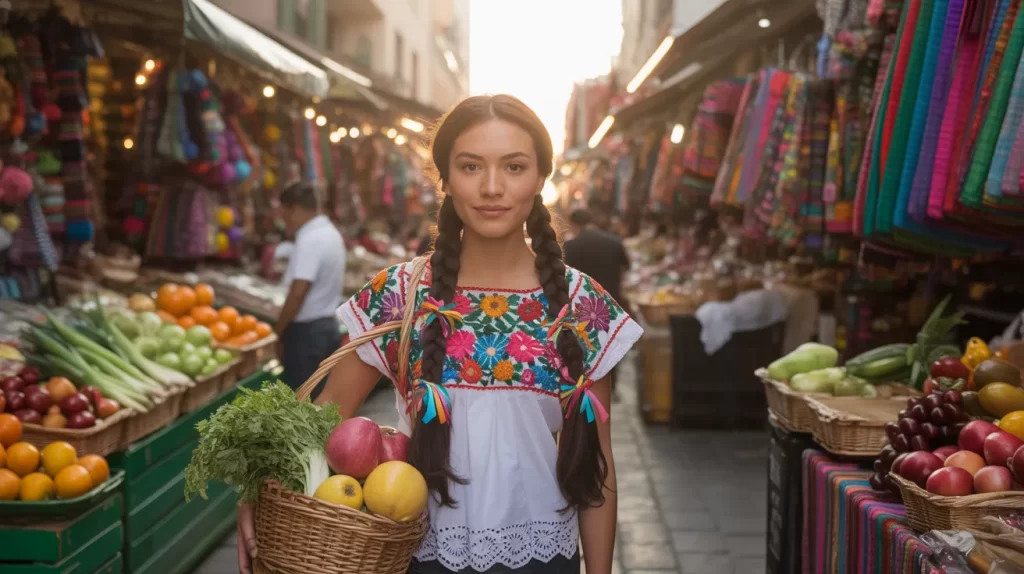Table of Contents
Latin America is a rich mosaic of diverse cultures, histories, and ancestries. From the mountains of the Andes to the coasts of the Caribbean, it’s a region known for its unique blend of traditions, languages, and appearances. One fascinating question that often arises is: Why do some Latin Americans look Asian?
In this blog post, we’ll explore the history, genetics, and cultural influences that have shaped the physical appearance of many Latin American individuals, particularly those who share features typically associated with Asian populations. By understanding the roots of this diversity, we gain a deeper appreciation for the region’s complex and multifaceted identity.
The Genetic and Historical Factors Behind Latin American Diversity
Indigenous Populations and Their Connection to Asia
A significant portion of Latin America’s population is descended from Indigenous peoples who have lived on the continent for thousands of years. These Indigenous groups, including the Aztecs, Mayans, and Incas, exhibit physical traits that may sometimes resemble East Asian populations.
The reason for this resemblance can be traced back to genetic connections between Indigenous peoples of the Americas and certain Asian groups. Recent genetic studies suggest that the ancestors of Native Americans likely migrated from Siberia, crossing the Bering Strait land bridge around 12,000 years ago.
This migration is the primary reason why Indigenous peoples in both the Americas and Asia share certain physical features, such as almond-shaped eyes, straight black hair, and a generally similar bone structure.
While these traits were present long before European colonization, they continue to shape the physical characteristics of many Latin American individuals today, particularly those with strong Indigenous heritage.
Asian Immigration to Latin America: A 19th and 20th Century Phenomenon
In the 19th and early 20th centuries, Latin America saw significant waves of Asian immigration, particularly from China, Japan, and other countries in East Asia. This influx of Asian immigrants, driven by factors such as labor shortages, economic opportunities, and political unrest, contributed to the increasing diversity of the region.
- Chinese Immigrants: In countries like Peru, Mexico, and Cuba, Chinese immigrants came in large numbers to work in agriculture, railroads, and other industries. Over time, many Chinese families settled in these countries and intermarried with local populations, passing on their genetic traits to future generations.
- Japanese Immigrants: Japan’s migration policies in the early 20th century also led to a significant number of Japanese immigrants settling in countries like Brazil and Peru. Today, Brazil has the largest Japanese community outside of Japan, and their descendants often reflect both Japanese and Latin American physical traits.
As a result, it’s common to see individuals in these countries who have both Latin American and Asian features, such as epicanthic folds and darker skin tones, creating a distinct blend of ethnicities.
Cultural Integration and Its Influence on Latin American Appearances

The Role of Mestizaje in Latin American Identity
The concept of mestizaje, or racial mixing, is central to understanding Latin American identity. The history of colonization, particularly the Spanish and Portuguese conquests, resulted in the blending of Indigenous peoples, Africans, and Europeans. Over centuries, the continuous intermingling of these diverse groups led to a broad range of physical features across the Latin American population.
Mestizaje has allowed for the inclusion of various traits from different ethnicities, including Asian features inherited from immigration. These features may sometimes be more prominent in certain individuals or regions, depending on the degree of Asian ancestry present in their family history.
For example, in countries like Peru and Brazil, which have large populations with Chinese or Japanese ancestry, the influence of Asian immigrants is particularly visible in their descendants. As these mixed identities have evolved, they have become an essential part of Latin America’s broader cultural fabric.
Modern Latin American Communities with Asian Roots
Today, many Latin American communities continue to embrace their Asian heritage, and the physical features associated with this heritage remain visible. Chinatowns in places like Mexico City, Buenos Aires, and Lima serve as a reminder of the ongoing integration of Asian cultures into Latin American society. Similarly, Japanese-Brazilian communities have continued to thrive in Brazil, contributing significantly to the cultural and economic life of the country.
In addition to these communities, Asian culture has also influenced art, food, and even language in Latin America. From Peruvian chifa (Chinese-influenced cuisine) to Japanese-Brazilian festivals, the integration of Asian cultures has been a defining aspect of the region’s vibrant diversity.
The Genetic Legacy: Why Some Latin Americans Look More Asian
At the genetic level, Latin Americans who appear to have more Asian traits may have a higher proportion of Asian ancestry, particularly if their ancestors were part of the waves of immigration from China, Japan, or other Asian nations. Over generations, these features became more prevalent in the population through intermarriage and genetic blending.
Additionally, the physical appearance of individuals with strong Indigenous roots often includes features commonly associated with East Asian populations, such as straight black hair, almond-shaped eyes, and a flatter facial profile. In areas with large Indigenous populations, these traits can be more pronounced.
Final Words
The question of why some Latin Americans look Asian is not just about physical traits, but also about the rich, diverse history of the region. The combination of Indigenous heritage, Asian immigration, and mestizaje over the centuries has created a dynamic blend of ethnicities and cultures.
In Latin America, the presence of Asian features is a beautiful reminder of the ongoing cultural integration that has shaped the identity of the continent. Whether it’s the Chinese community in Peru, the Japanese influence in Brazil, or the Indigenous populations with East Asian genetic roots, Latin America’s diversity is one of its most defining characteristics.
As Latin Americans continue to embrace their multifaceted heritage, the blending of ethnicities, including Asian ancestry, will remain a testament to the region’s complex and evolving identity.

